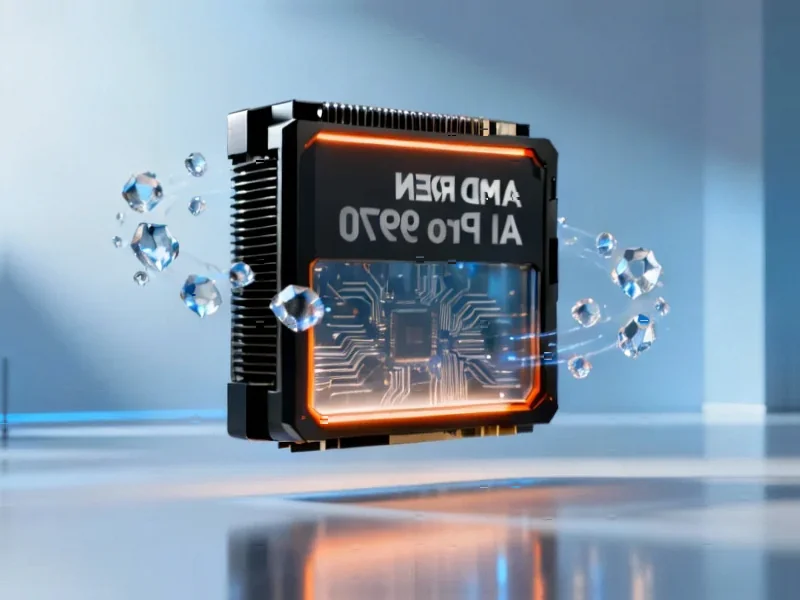According to Ars Technica, AMD initially announced with its Adrenalin 25.10.2 driver release that Radeon RX 5000-series and 6000-series GPUs based on RDNA 1 and RDNA 2 architectures would move to “maintenance mode,” effectively ending fresh fixes and performance optimizations for newly launched games. Following significant backlash, AMD released multiple clarifying statements confirming these GPUs would continue receiving “new features, bug fixes, and game optimizations” based on market needs, with the company specifically noting that integrated and dedicated GPUs based on these architectures would maintain “game support for new releases,” “stability and game optimizations,” and “security and bug fixes.” AMD explained that these older architectures have been moved to a separate driver path to prevent fixes intended for newer RDNA 3 and RDNA 4 GPUs from breaking functionality for older hardware. The situation mirrors AMD’s 2023 decision to move Polaris and Vega architectures to separate packages with only critical updates, despite many lower-end systems still using these integrated GPUs.
The Technical Reality Behind Driver Separation
AMD’s explanation about separating driver code paths makes technical sense, but the execution reveals deeper challenges. Creating distinct branches for RDNA 1/2 versus RDNA 3/4 architectures means engineering resources are effectively split. While AMD claims this approach allows faster innovation for newer architectures while maintaining stability for older ones, the reality is that separate codebases require duplicate testing, validation, and quality assurance efforts. The 25.10.2 driver release notes indicate this separation is already in effect, but history shows that “separate but equal” driver branches often become “separate and neglected” over time.
Market Implications and Competitive Pressure
The rapid reversal suggests AMD underestimated both consumer expectations and competitive pressures. NVIDIA continues supporting GeForce RTX 20- and 30-series cards launched in the same 2019-2022 window as AMD’s RDNA 1 and RDNA 2 architectures. More importantly, RDNA 2’s ongoing relevance in current products creates an unusual situation where AMD would effectively be abandoning support for hardware it’s still actively selling. The Ryzen Z2 series and numerous integrated graphics solutions continue using RDNA 2 architecture, making any reduction in support commercially problematic.
The Handheld Gaming Dilemma
RDNA 2’s significance extends far beyond traditional desktop graphics cards. The architecture powers Valve’s Steam Deck, Microsoft and Asus’s ROG Xbox Ally series, and numerous other handheld gaming devices. These systems have longer expected lifespans than traditional GPUs and depend on ongoing driver optimization for new game releases. AMD’s initial announcement threatened to undermine the value proposition of these devices, potentially damaging relationships with hardware partners who’ve built entire product lines around RDNA 2 architecture.
The Windows 10 Support Complexity
AMD’s handling of Windows 10 support reveals another layer of complexity in GPU driver maintenance. While Windows Latest confirmed that drivers will continue supporting Windows 10 despite its removal from official release notes, this creates confusion for consumers. Microsoft’s extended security update program for Windows 10 means the operating system will remain in widespread use through 2028, particularly in enterprise and education environments. AMD’s attempt to align with Microsoft’s official support timeline while maintaining practical compatibility reflects the challenging balancing act GPU manufacturers face.
Long-Term Support Concerns Remain
Despite AMD’s reassurance, the incident raises legitimate concerns about long-term driver support strategy. The company’s track record with Polaris and Vega architectures shows a pattern of moving older architectures to reduced support status relatively quickly. With GPU development cycles accelerating and architectural changes becoming more significant between generations, maintaining comprehensive driver support across multiple architectures becomes increasingly resource-intensive. The separate driver path approach may work initially, but as Tom’s Hardware initially reported, the concern is that these branches will receive progressively less attention over time.
Broader Industry Trend
AMD’s driver support challenge reflects a broader industry trend where rapid technological advancement conflicts with consumer expectations for long-term product support. As GPU architectures become more complex and specialized, the cost of maintaining comprehensive driver support across multiple generations increases significantly. Other chip manufacturers face similar pressures, but AMD’s situation is particularly acute given its dual role as both discrete GPU supplier and integrated graphics provider for CPUs and handheld devices. The company must navigate these competing priorities while maintaining consumer trust and competitive positioning against NVIDIA’s more established driver support reputation.




